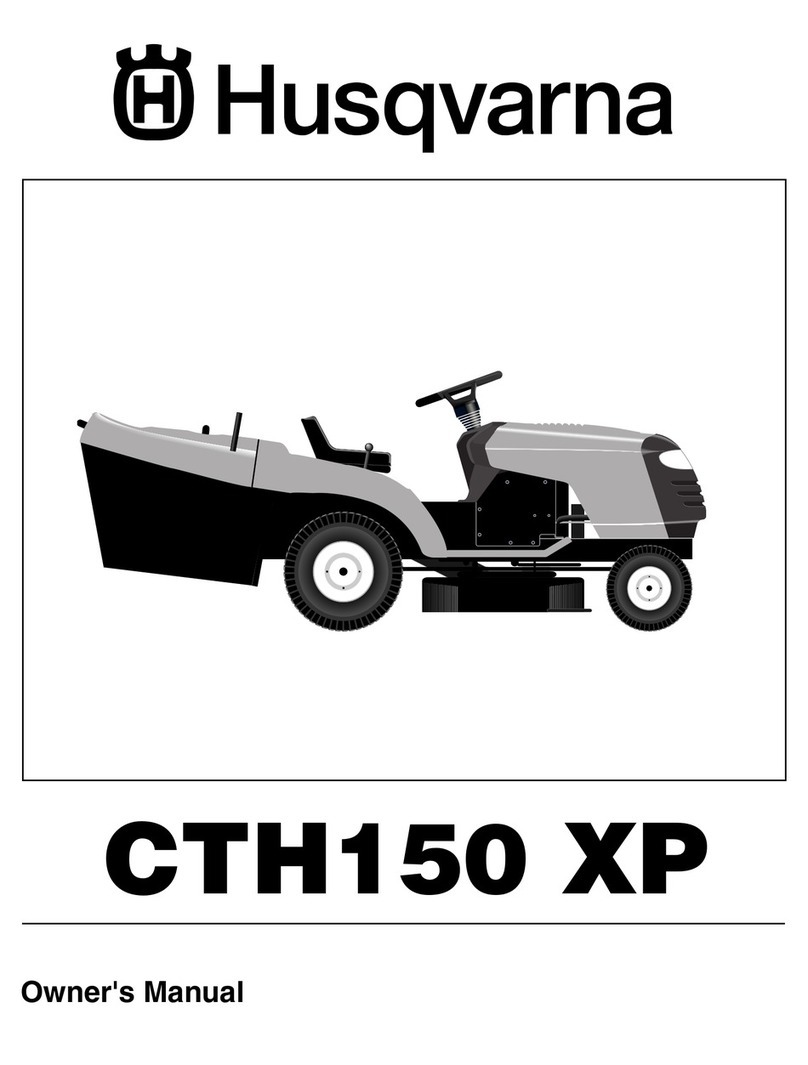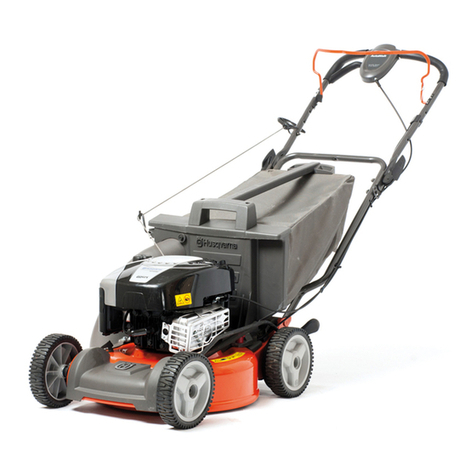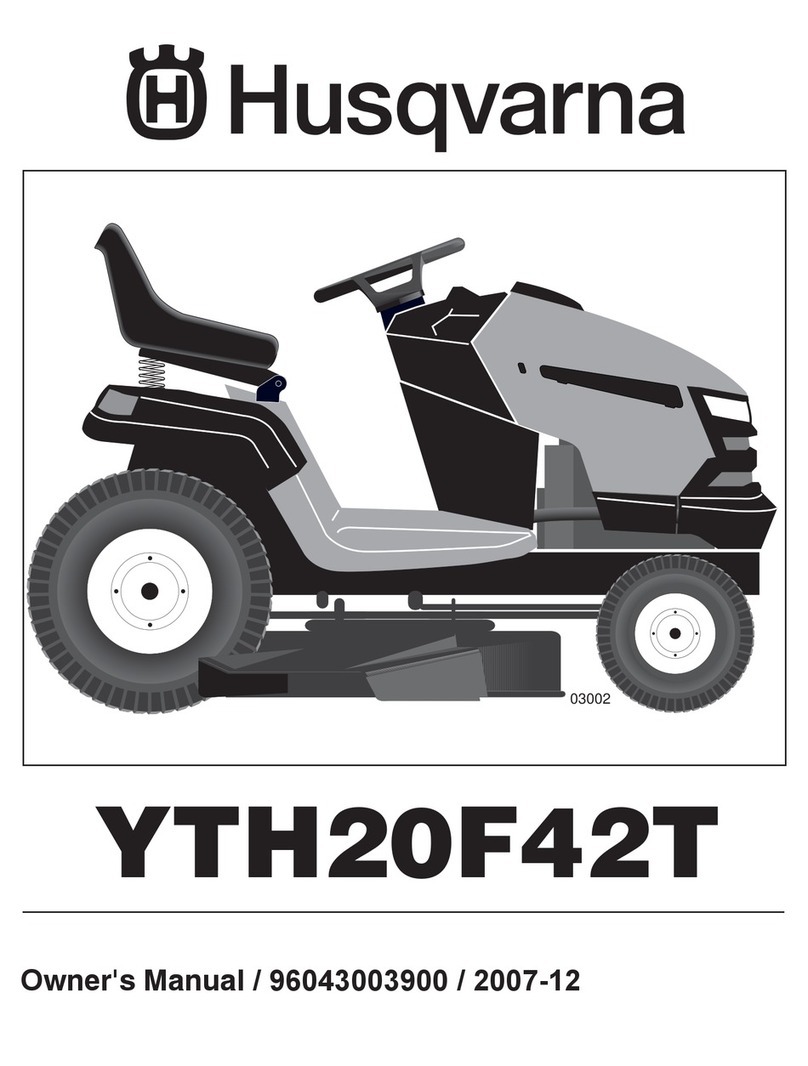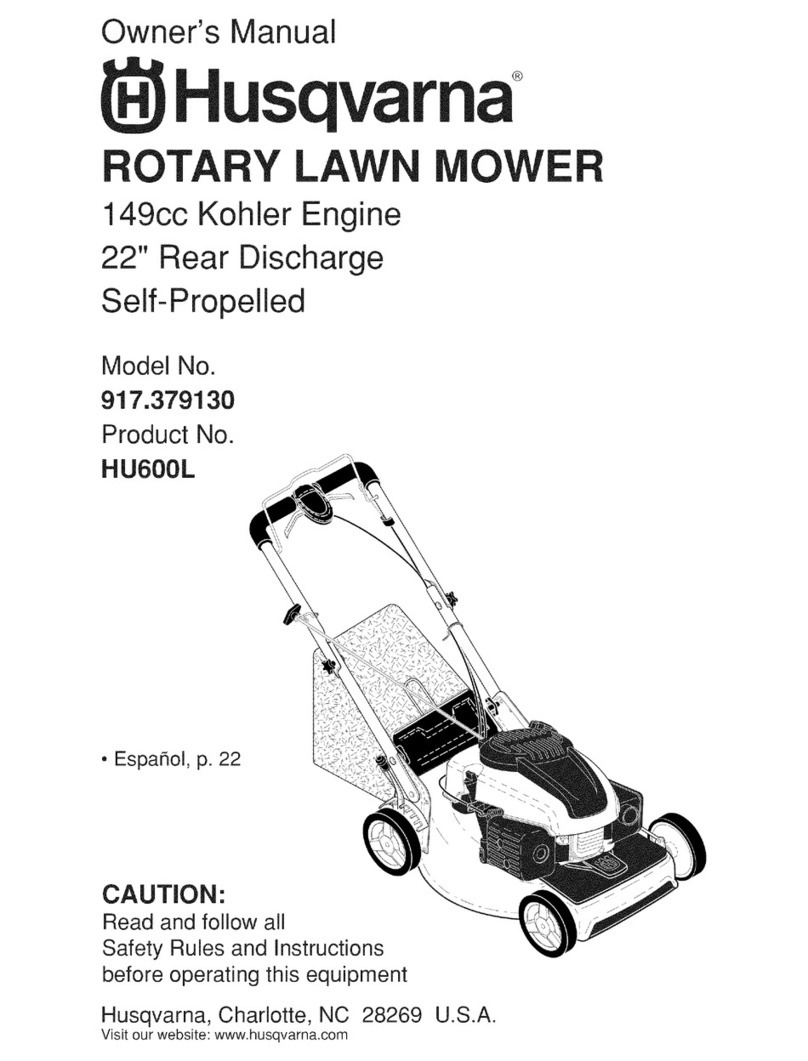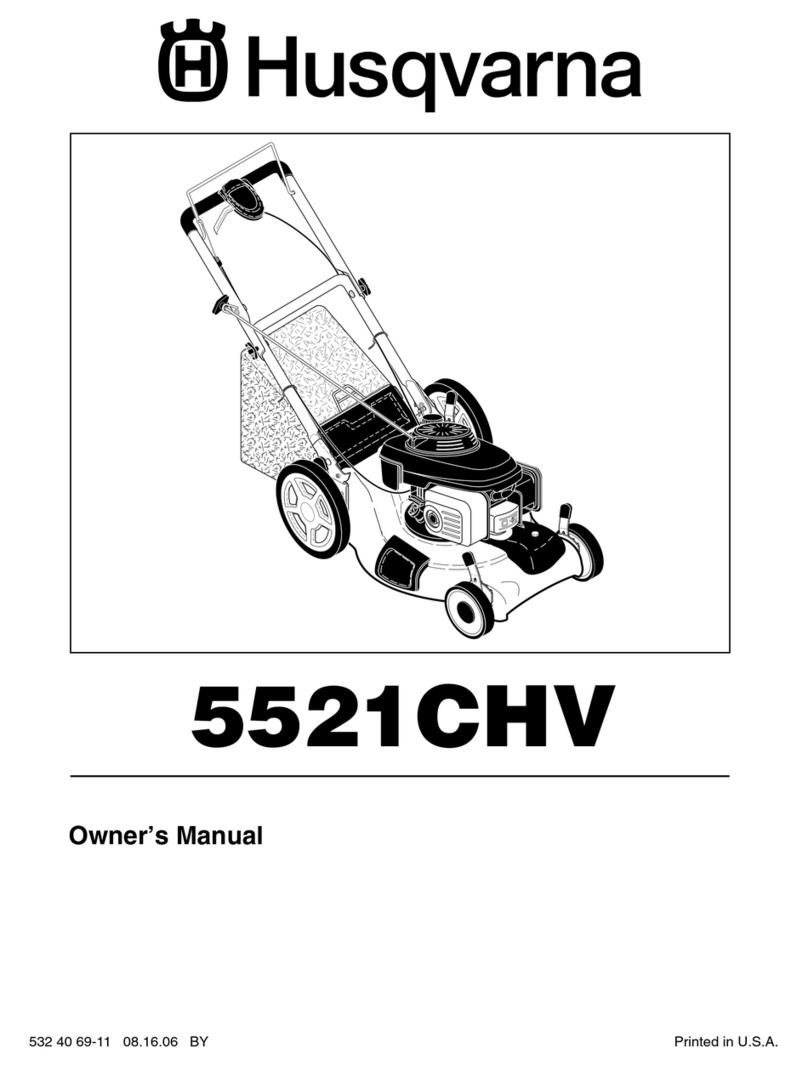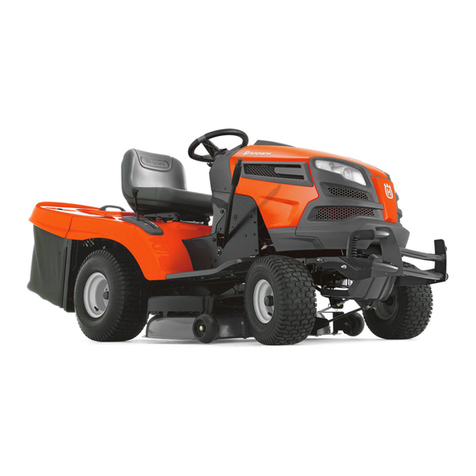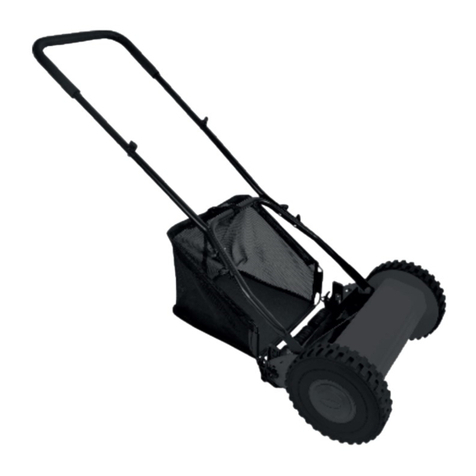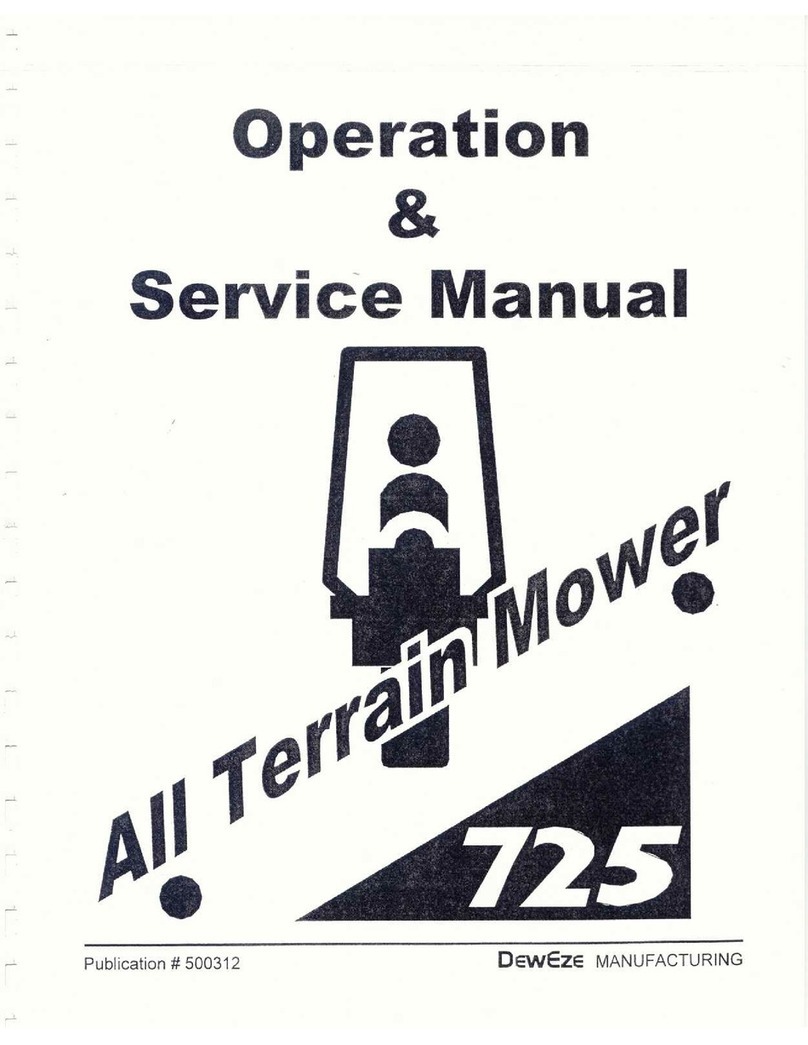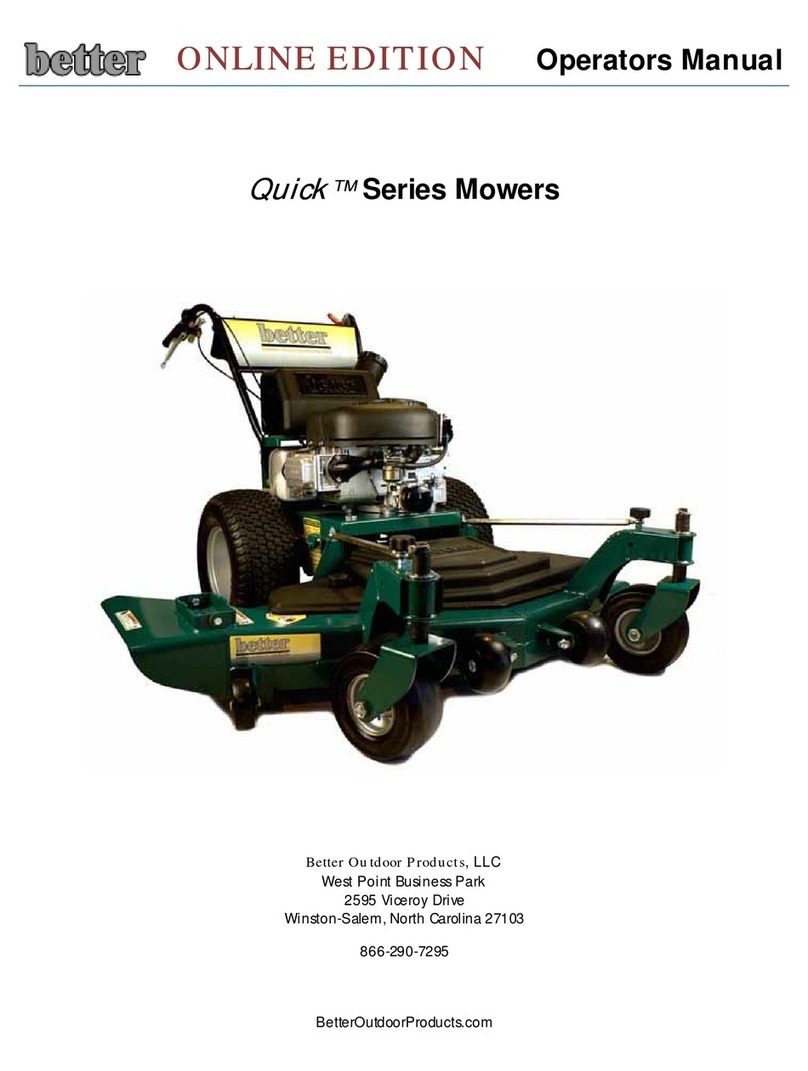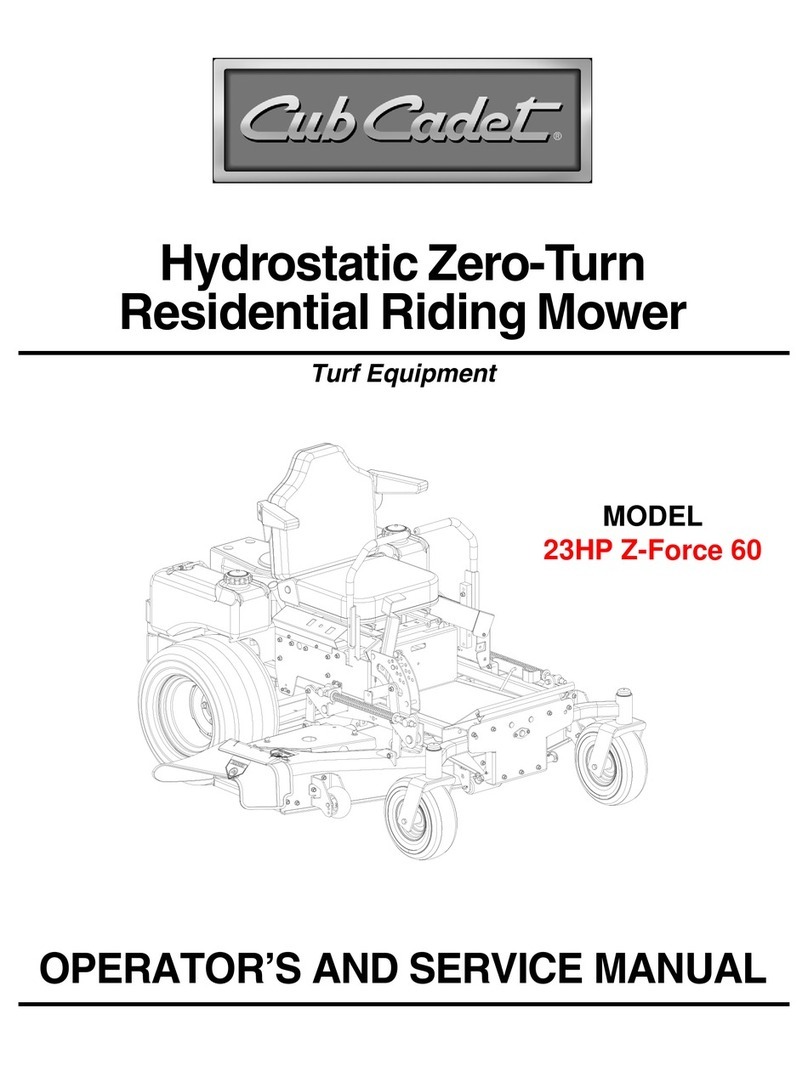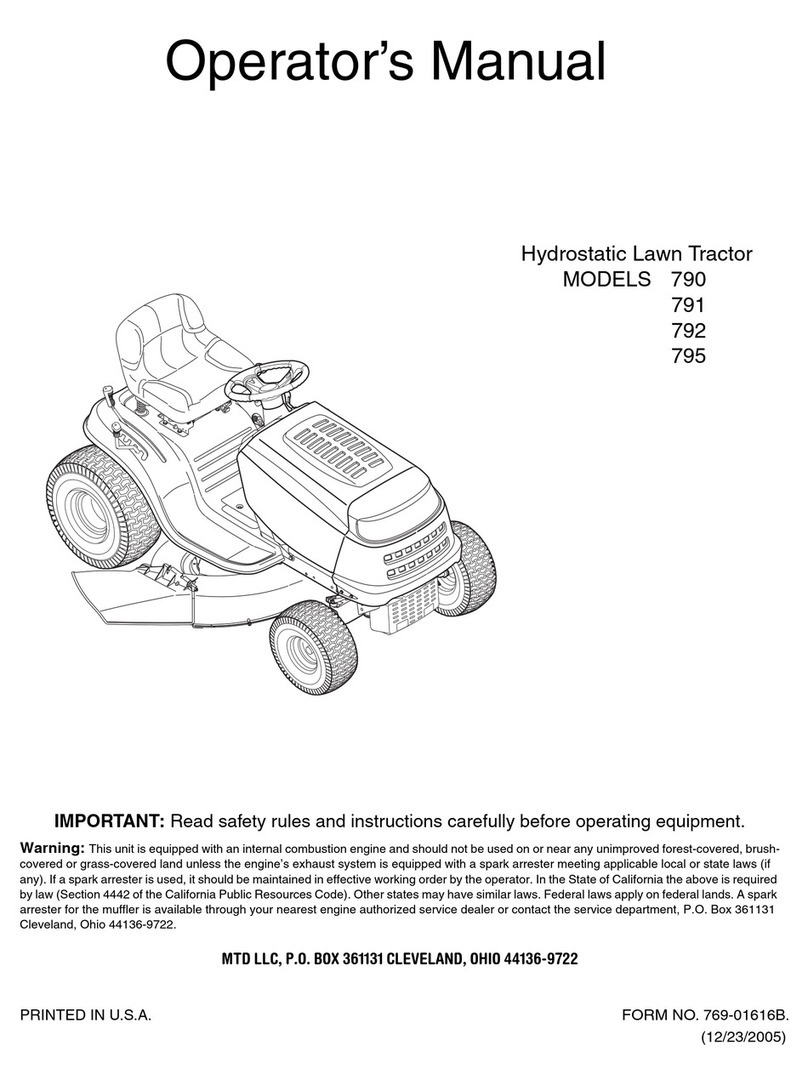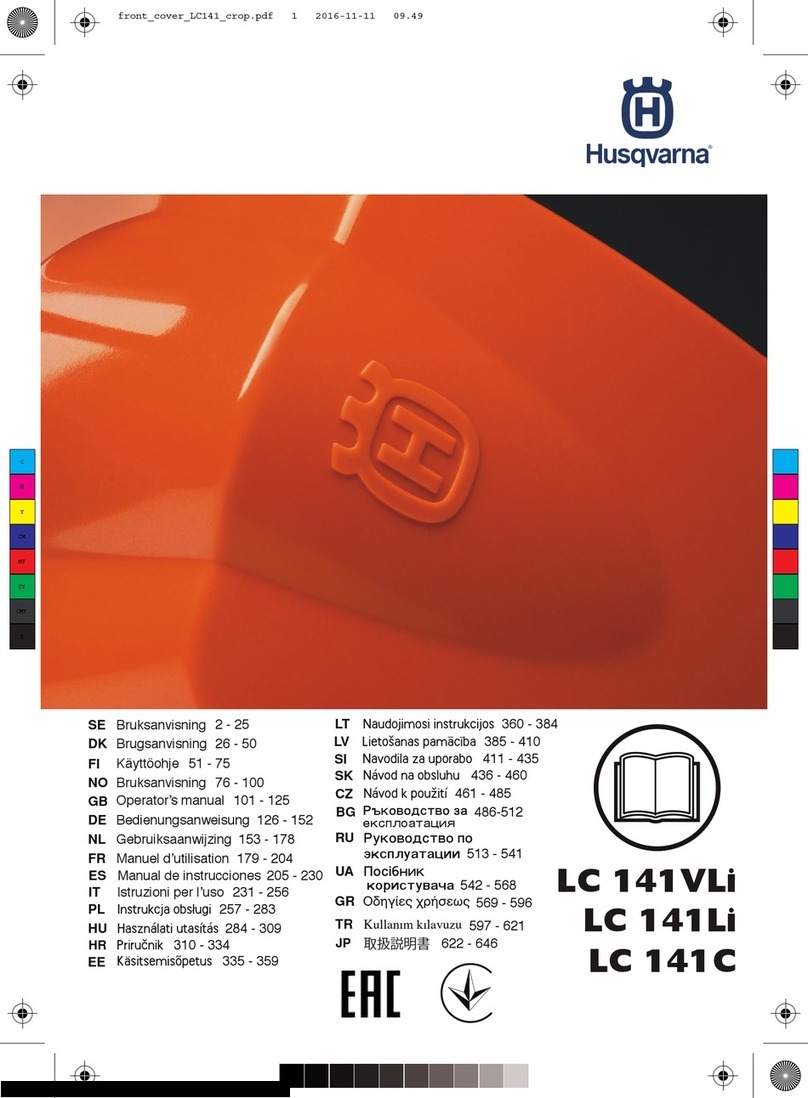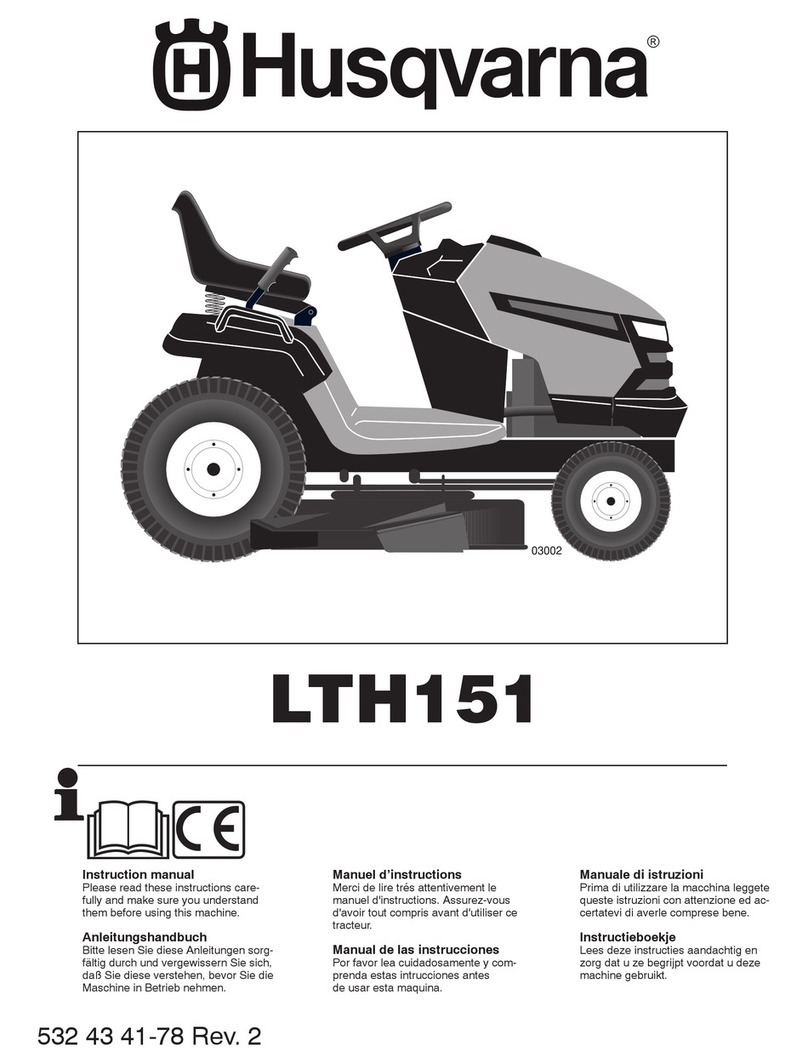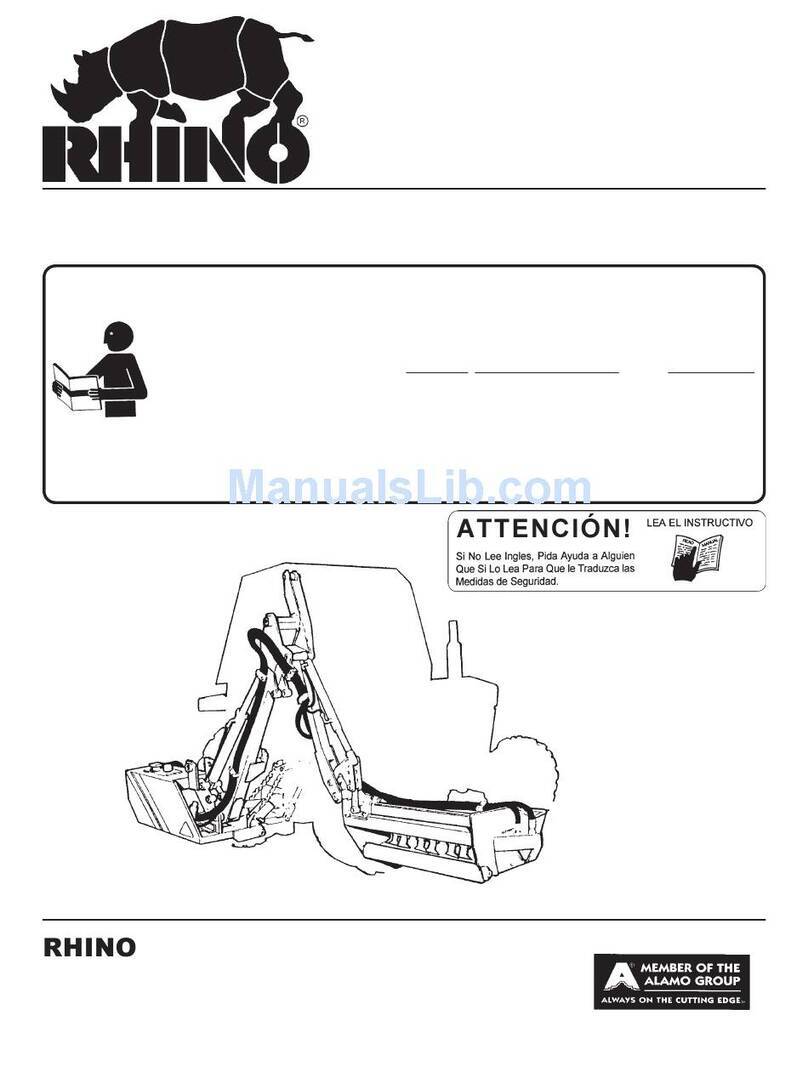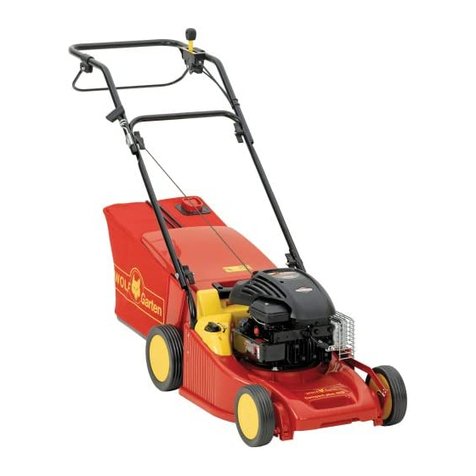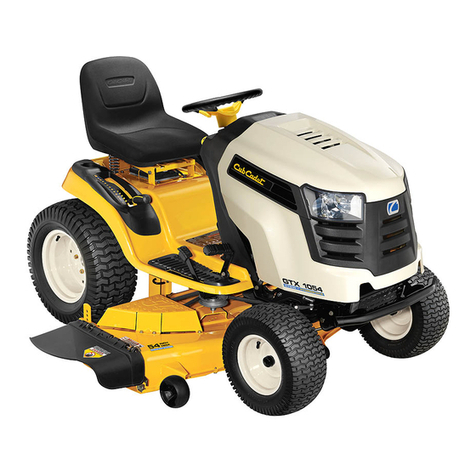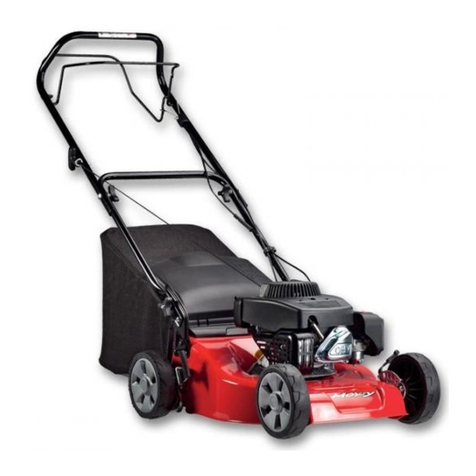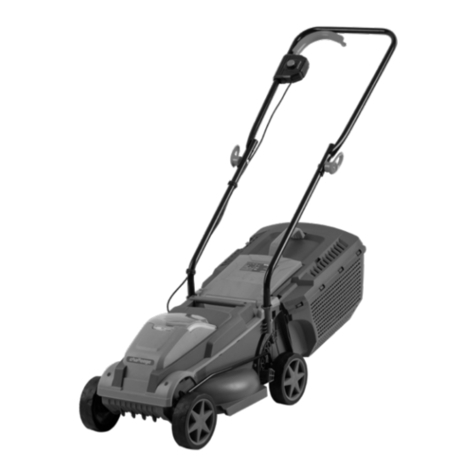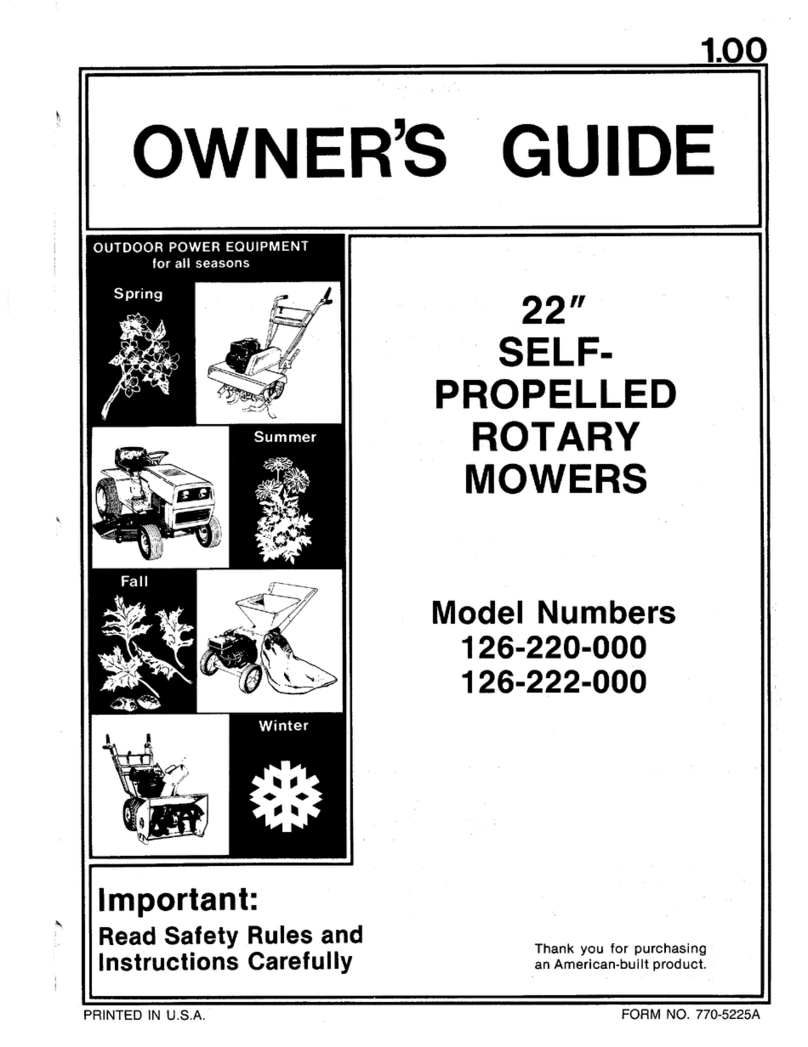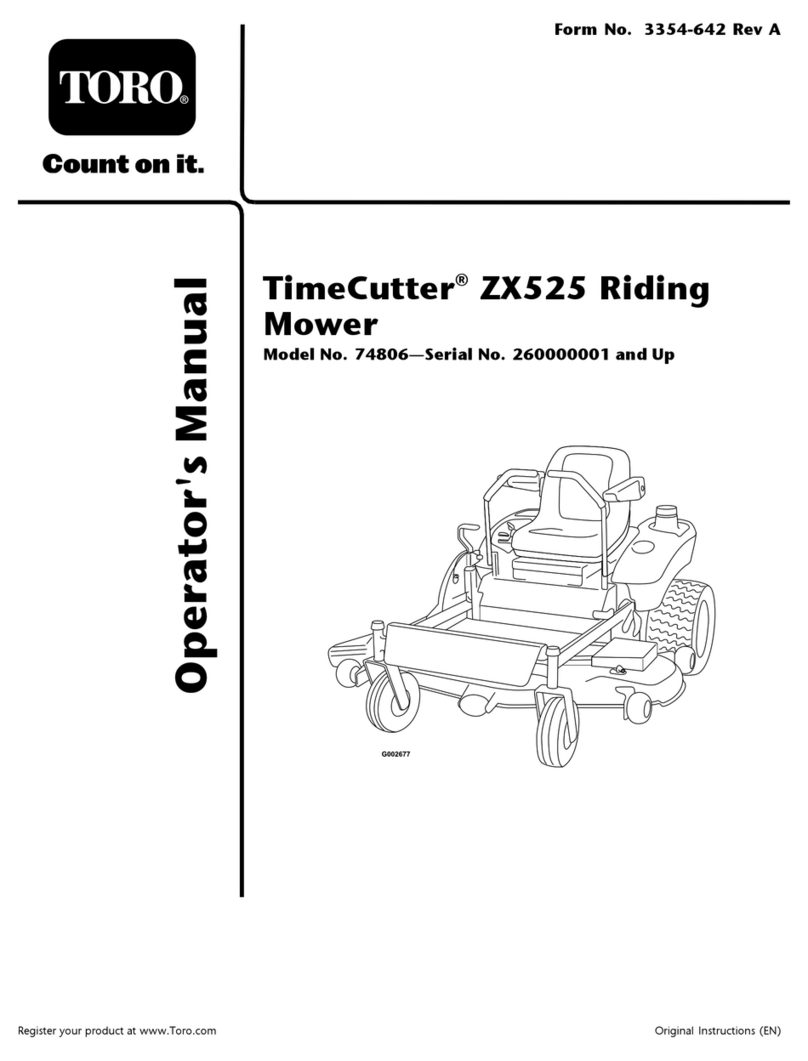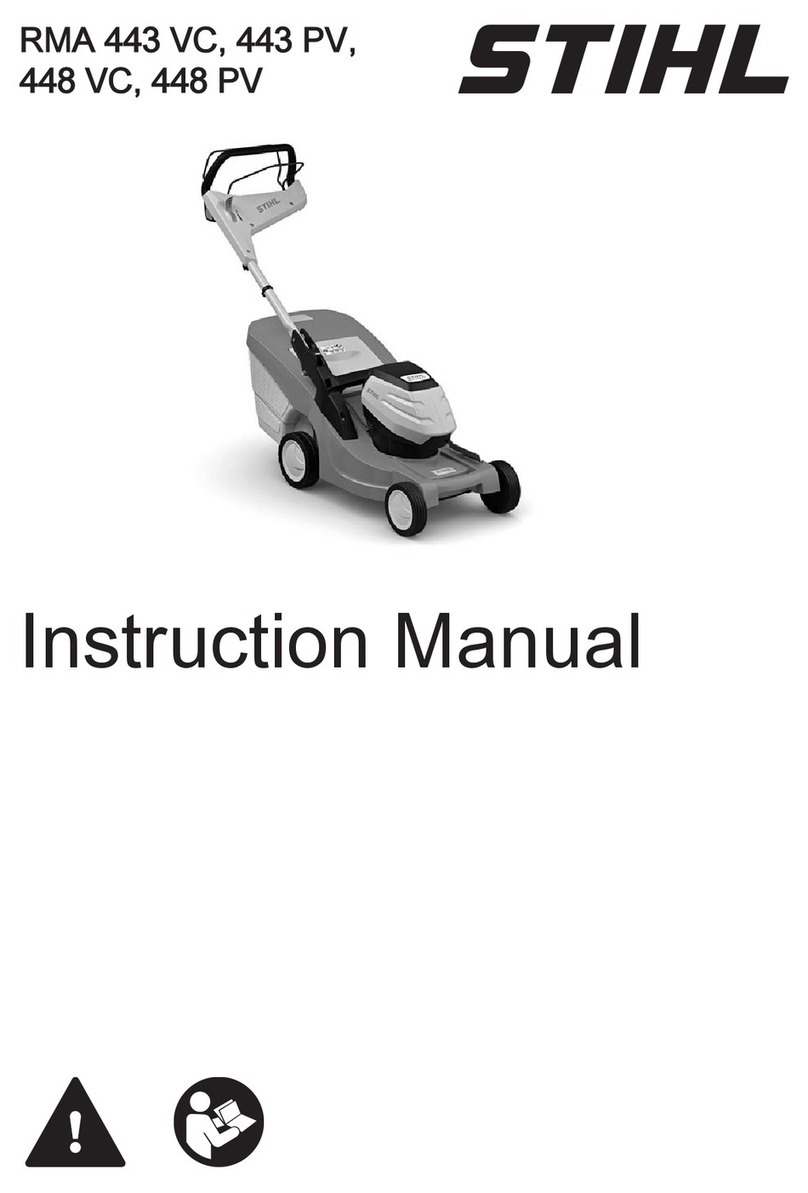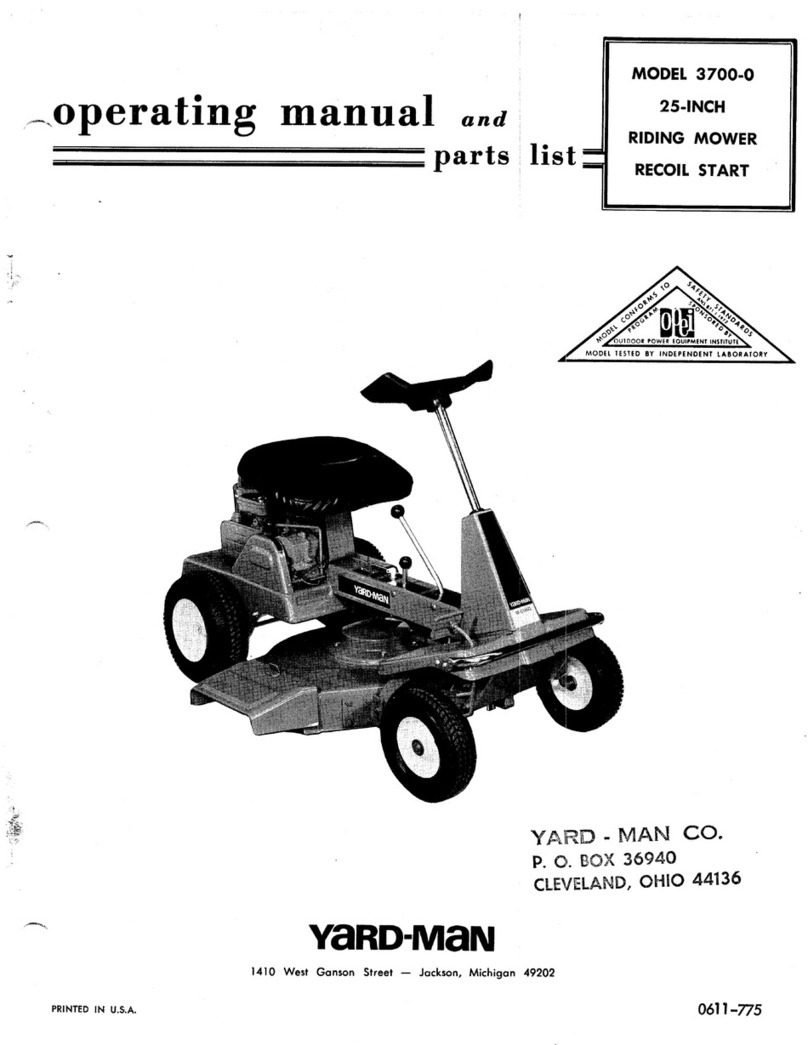MANTENIMIENTO A LAS 100 HORAS
Acción Fecha, Lectura De Medidor,
Sello, Firma
Realice el mantenimiento de las 50 horas
Cambiar el aceite del motor
Limpiar/cambiar las bujías
Inspeccionar los cables del acelerador y el estrangulador
Inspeccionar la tornillería
Comprobar la presión de los neumáticos
Cambiar el aceite y el fi ltro del motor
Inspeccionar la correa del equipo y las cuchillas
MANTENIMIENTO A LAS 300 HORAS
Acción Fecha, Lectura De Medidor,
Sello, Firma
Realice el mantenimiento de las 100 horas
Comprobar el ajuste del equipo de corte
Limpie la cámara de combustión y esmerile los asientos de válvula
Cómo verifi car el huelgo de las válvulas
Reemplace el prefi ltro espuma del purifi cador de aire
AL MENOS UNA VEZ AL AÑO
Acción Fecha, Lectura De Medidor,
Sello, Firma
Limpiar la toma de aire de refrigeración del motor (25 horas)
Reemplace el prefi ltro espuma del purifi cador de aire (300 horas)
Reemplace el cartucho de papel del fi ltro de aire
Cambiar el aceite del motor (50 horas).
Reemplace el fi ltro de aceite del motor (100 horas).
Comprobar/ajustar la altura de corte
Comprobar/ajustar el freno de estacionamiento (50 horas).
Limpiar/cambiar las bujías (100 horas).
Reemplace el fi ltro de combustible (100 horas).
Comprobar el reglaje de la válvula del motor
78
REGISTRO DE SERVICIO
INTRODUCTION ............................................. 4
Driving and Transport on Public Roads ....... 4
Towing .........................................................4
Operating ..................................................... 4
SYMBOLS AND DECALS ............................... 6
SAFETY ........................................................... 7
Protecting Children ...................................... 7
Personal Safety Equipment ......................... 8
Slope Operation ........................................... 8
Safe Handling of Gasoline ........................... 9
Transport ................................................... 10
Towing ....................................................... 10
Spark Arrestor ............................................ 10
Rollover Protection System ........................11
ASSEMBLY .................................................... 12
Rops Installation ........................................ 12
CONTROLS ................................................... 13
Steering Control Levers ............................. 14
Throttle Control .......................................... 14
Ignition Switch ........................................... 14
Choke Control ............................................ 14
Blade Switch .............................................. 15
Service Meter ............................................ 15
Park Brake ................................................. 15
Seat Adjustment Lever .............................. 15
Fuel Shut Off Valve .................................... 15
Fuses ......................................................... 16
Tracking ..................................................... 16
Cutting Height Pedal .................................. 16
Hydro Release Levers ............................... 16
Fuel Tank ................................................... 17
OPERATION .................................................. 18
Training ...................................................... 18
Operating on Hills ...................................... 20
Moving Machine By Hand .......................... 21
MAINTENANCE............................................. 22
Battery ....................................................... 24
Safety System ........................................... 25
Park Brake ................................................. 25
V-belts ........................................................25
Cutting Blades ........................................... 26
Adjusting the Mower Deck ......................... 27
ZT-3100 Powertrain ................................... 27
Cleaning .................................................... 28
Caster Wheels ........................................... 28
Anti-scalp Rollers ....................................... 28
LUBRICATION ............................................... 29
Engine oil change ...................................... 30
Wheel and Deck Zerks .............................. 30
Transaxle Fluid Change ............................. 31
TROUBLESHOOTING .................................. 32
STORAGE ...................................................... 33
SCHEMATIC .................................................. 34
TECHNICAL DATA ........................................ 35
SERVICE JOURNAL ..................................... 37
INTRODUCCIÓN ........................................... 41
Conducción y transporte en vías públicas . 41
Remolque .................................................. 41
Funcionamiento ......................................... 41
SÍMBOLOS Y RÓTULOS .............................. 43
SEGURIDAD .................................................. 44
Seguridad infantil ....................................... 44
Equipo de seguridad personal ................... 45
Funcionamiento en pendientes ................. 45
Manipulación segura de la gasolina .......... 46
Transporte ................................................. 48
Remolque .................................................. 48
Parachispas ............................................... 48
Sistema de protección antivuelco .............. 49
MONTAJE ...................................................... 50
ROPS INSTALLATION .............................. 50
CONTROLES ................................................. 51
Palancas de control de la dirección ........... 52
Freno de estacionamiento ......................... 52
Control del acelerador ............................... 52
Interruptor de arranque .............................. 53
Interruptor de la cuchilla ............................ 53
Estrangulador ............................................ 53
Medidor de servicio ................................... 53
Palanca de ajuste del asiento .................... 53
Fusibles ..................................................... 54
Pedal de equipo ......................................... 54
Palanca de ajuste del asiento .................... 54
Botón de seguimiento ............................... 54
Depósito de combustible ........................... 55
Palancas de liberación hidrostática ........... 55
OPERACIÓN ................................................. 56
Capacitación .............................................. 56
Trabajo en pendientes ............................... 58
Mover la máquina manualmente ............... 59
MANTENIMIENTO ........................................ 60
Batería ....................................................... 62
Sistema de seguridad ................................ 63
Freno de estacionamiento ......................... 63
Correas en V ............................................. 63
Discos de corte .......................................... 64
Ajuste del equipo de corte ......................... 64
ZT-3100 Powertrain ................................... 65
Ruedas de apoyo ...................................... 66
Ruedecillas ................................................ 66
Limpieza .................................................... 66
LUBRICACIÓN .............................................. 67
Cambio de aceite del motor ....................... 68
Engrasadores de rueda y equipo .............. 68
Cambio de líquido del transeje .................. 69
SOLUCIÓN DE PROBLEMAS ..................... 71
ALMACENAMIENTO ..................................... 72
ESQUEMA ..................................................... 73
DATA TÉCNICOS .......................................... 74
REGISTRO DE SERVICIO ........................... 76
CONTENTS
